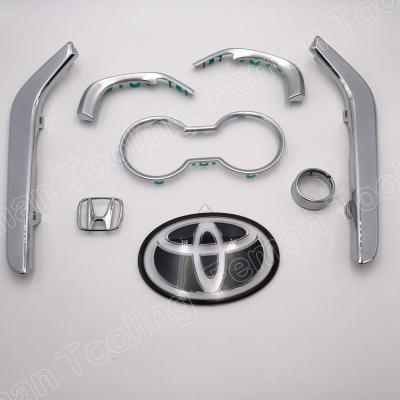① Factors in raw materials: including toner replacement, plastic material grade change, and setting agent replacement.
② Different types of raw materials: For example, injection molding polypropylene and ABS material or injection molding polycarbonate require the same color, but there is a slight color difference due to different material types, but a limited range is allowed.
③ Equipment process reasons:
A. temperature;
B. Pressure;
C melting time;
D. Different batches of mixing materials, different machines and other process factors.
④ Environmental factors: the barrel is not clean, the drying hopper is dusty, the mold is oily, etc.
⑤ Factors of the toner itself: some toners are not affected by temperature, and the products are easily changed by temperature changes.
Generally, the parts that appear are: deep, thin, long, thin, far from the gate, easy to trap air and lack of glue in places with debris in the mold.
① Mould:
A. The design of the gating system is unreasonable. The gating system is the channel for the melt to enter the mold cavity, which has a great relationship with the molding quality of the injection molded parts. The gate is not parallel, and the position of the gate is not in the wall thickness;
B. The mold exhaust structure is poor;
C. Impurities or cold materials in the melt block the flow channel;
D. The mold temperature does not meet the requirements.
② In terms of raw materials:
A. The moisture content of raw materials is too large;
B. The volatile matter in the raw material exceeds the standard;
C. There are too many impurities or recycled materials in the raw materials.
③ Injection molding machine:
A. Insufficient injection volume: For example, a 150T machine is used to produce 180T products.
B. The nozzle is blocked by foreign matter, and the nozzle hole is too small;
C. Insufficient supply of raw materials: if the barrel is blocked, the nozzle material will affect the blanking;
D. Check valve failure;
E. The injection stroke is not enough;
F. The sealing ring of the injection cylinder is damaged.
④ Forming operation:
A. The mold temperature is too low;
B. The injection pressure is too low;
C. The pressure holding time is too short;
D. The injection speed is too slow or too fast;
E. The melt temperature is too low.
① Mould:
Mainly due to unreasonable reasons in mold design.
② Forming operation:
A. The injection pressure is too high, the molecular orientation of the fluid direction and the vertical flow direction are quite different, and the plastic tries to restore the original curled state, so the shrinkage in the fluid flow direction is greater than that in the vertical flow direction;
B. The melt temperature is too high;
C. The holding pressure is too high: when the holding pressure is high, the internal pressure in the plastic is too high, and the release of the internal stress after demolding causes the injection molded parts to warp and deform;
D. The melt flow rate is too slow;
E. The tempering temperature is too high or the time is too long.
③ In terms of raw materials: PP/PA materials are easily deformed.
① Mould:
A. There are too many gates, that is, there are too many glue feeding points, and the cross-sectional area of the glue feeding mouth is too small;
B. There is no cold material hole in the mold or the position of the cold material hole is incorrect;
C. The design of the mold cooling system is unreasonable, and the melt is cooled too fast and unevenly in the mold.
② In terms of raw materials:
A. Too much release agent is used, or unsuitable release agent is used;
B. The fluidity of the melt is poor, and it is easy to produce weld lines during molding;
C. There is too much water in the raw material or the volatile content is too high.
③ Forming operation:
A. The melt temperature is too low, the low temperature melt has poor shunting and confluence performance, and it is easy to form weld lines;
B. The melt injection pressure is too low, so that the injection speed is too slow, and the temperature of the melt in the cavity is not the same. At this time, the melt is easy to produce weld lines when the melt is divided and merged.
